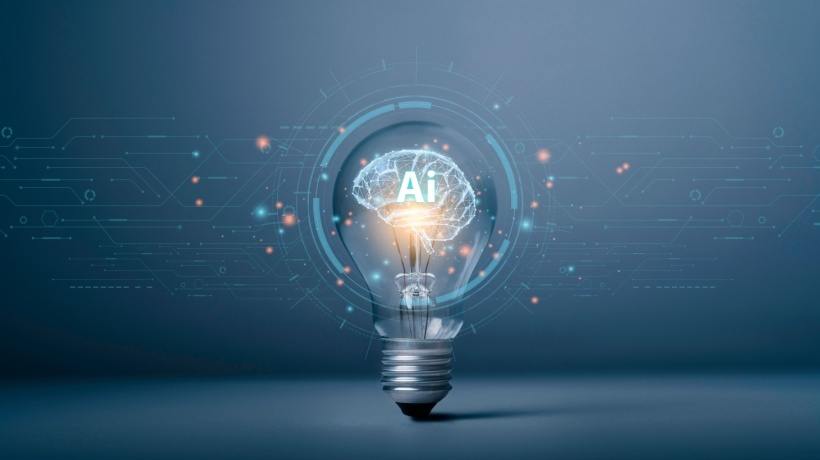What Does The Future Hold For GenAI Technology In L&D?
AI technology is evolving by leaps and bounds, and it's a challenge to imagine where it might land in the next few months—let alone the next year.
To help envision the AI-infused future of L&D, I interviewed the folks who are surveying, researching, and building within this constantly shifting landscape every day.
Here's what they had to say.
Arturo Schwartzberg

From your seasoned perspective, how do you view AI and our world of Learning & Development?
Now that I'm in my mid-70s, I've experienced a march of mind-boggling technologies. Quaint now, but I recall the awe of receiving real-time printed communications via fax. And then computers and the internet and smartphones, and so the march of the unbelievable continues.
Yet AI stands out. In my work at SweetRush, I'm surrounded by technology and technologists, and we're leveraging tech all day, every day. And yet I also like dirt roads and lean rustic and soon hope to fix my record player. But I'm a pragmatist and know there's no putting the genie back in the bottle, and so I'm enamored and terrified by the power of AI and accept it is happening. Here in San Francisco, I see cars turning the corner with empty driver's seats, and I know it's the future. I know humans get sleepy, drunk, distracted, and are good at making poor decisions.
AI is rapidly maturing, and its effect on our business (and how we drive) will be titanic.
And yet we are adapting, and it's just another tool we'll use as we bring our human intelligence and our knowledge of how people learn and change to help our clients win and be successful.
We're already doing so much AI training work: It's a new, open world of training necessity. And then there are the AI agents that can act independently, adapt and make decisions, initiate actions, and build stories—even visually—around concepts.
Once again, I am grateful to be part of something so remarkable. The new world is not the old world of pre-scripted chatbots, but rather empathetic and context-aware agents who, in a few years, it's said, will be a million times smarter than I, as is my wife now, so I am prepared. Off we go into a new AI world. It's happening, so bring it on! This rambling passage was written 100% by a sleepy, distracted, but (thankfully) not drunk human.
Adrián Soto

What would be your dream project?
One of my primary interests lies in observing the creative integration of diverse technologies to create innovative and awe-inspiring solutions. Our work predominantly involves digital content deployed through web platforms and is accessed on computers and virtual reality (VR) headsets. This content encompasses a combination of visual techniques, voice analytics, AI services, and other advanced technologies that enhance its overall appeal.
However, there is one specific area that has always captured my attention and presented itself as an unfulfilled aspiration: the fusion of digital elements with real-world scenarios.
My dream project would combine cutting-edge digital technologies with tangible elements such as location-based information or Internet of Things-based (IoT-based) technologies. Some examples include location-relevant content or the creation of customized physical controllers that meet the unique needs of individuals, especially those with disabilities.
Dani Silver

What potential AI developments, functions, or features are you most excited or curious about?
I'm incredibly excited about the power of AI to revolutionize branching simulations. We're now able to create deeply immersive conversational simulations that go far beyond simple multiple-choice prompts. Imagine learners using their own voices to interact with realistic avatars—it's an incredibly powerful way to practice soft skills. Whether for leadership training, coaching dialogues, difficult conversations, interview skills, or any scenario where interpersonal interaction is key, these simulations provide a safe space for authentic practice. AI enables us to offer learners highly personalized feedback based not only on what they say but also on how they say it.
An added benefit is that these experiences are completely scalable. We can now deliver impactful learning experiences that are accessible anytime, anywhere, without the need for facilitators or complex logistics. This opens up a world of possibilities for reaching learners across industries and geographies.
What would be your dream project?
My dream project would be to harness the power of AI-driven simulations to tackle sensitive and crucial topics like diversity, equity, inclusion, and even anti-hate initiatives.
In our increasingly interconnected world, where diverse perspectives and backgrounds often collide, these immersive experiences could offer a safe space to practice navigating difficult conversations with respect, empathy, and understanding. Imagine being able to role-play scenarios that challenge biases, encourage dialogue, and ultimately foster a more inclusive and compassionate society.
Emily Dale

What potential AI developments, functions, or features are you most excited or curious about?
What would be your dream project?
I'm excited about the intersection of LLMs and VR to create more immersive, dynamic, and intuitive training experiences. Because LLMs are capable of understanding natural language and human speech, they open up new possibilities for how learners occupy, navigate, and interact with virtual worlds. Imagine walking around inside a digital twin of your work environment, performing tasks, exploring its features, and asking questions out loud as you go. Anytime you are curious, stuck, or just want an explanation, you can ask your ever-present tutor and they will give you an answer. The LLM behind the tutor could be trained to support the learner in a variety of ways, such as coaching, mentoring, instructing, or evaluating, thus allowing the learner to freely ask questions without filtering or compartmentalizing their respective queries. The tutor could even spontaneously take the form of a customer, patient, or client to support role-play for the practice of soft skills like negotiation or therapeutic interactions and communications.
This kind of shapeshifting of roles in an already immersive environment opens up new possibilities to scale "experiential learning," adapt to learners' natural whims, and allow them to assimilate knowledge among acts of listening, practice, reflection, and play.
A natural evolution of this kind of learner-centered experience could be a fully personalized VR learning library encompassing both professional skills and personal interests. For instance, imagine a dome interface where a learner can seamlessly switch between VR training modules for their job and experiences designed to improve their tennis swing, play an instrument, or learn a language. This kind of centralized "personal school" would enable learners to integrate their passions and work life and foster connections between their diverse areas of interest without the need to compartmentalize or sacrifice one for the other.
Ideally, these kinds of AI- and XR-enabled holistic learning environments enhance our curiosity and motivation, create new opportunities for social learning, and allow us to better integrate our professional, emotional, intellectual, and creative selves.
Andrés Villalobos

What would be your dream project?
My dream project is to revolutionize education through AI-powered personalized learning paths. I envision a system that adapts perfectly to each learner, making education more engaging, efficient, and effective.
Imagine an AI that starts by thoroughly assessing a learner's current knowledge and skills. I want to go beyond traditional tests, incorporating interactive simulations and even Virtual Reality experiences to gain a comprehensive understanding of each individual's capabilities. My AI wouldn't just measure what someone knows; it would decipher how they learn best. Prefer visuals? Hands-on enthusiast? The AI would tailor its teaching methods to suit each unique learning preference.
As learners progress, I see the AI becoming a personal curator, hand-picking the ideal mix of resources from an extensive content library. A learner might watch a video on one topic, dive into an article on another, and practice through a simulation for a third. The difficulty would adjust in real time, always providing the right level of challenge without causing frustration.
An AI tutor that's available round-the-clock is ready to answer questions, offer explanations, and provide encouragement. This personalized support system would be there whenever a learner needs it, offering instant, tailored feedback.
The AI would continuously analyze each learner's progress, anticipate potential obstacles, and fine-tune the learning path accordingly. It might discover that someone learns best in short morning sessions or needs extra practice with specific concepts.
My goal isn't just to make learning easier—it's about unlocking human potential.
By adapting to each person's unique needs and abilities, I believe these AI-powered personalized learning paths could help everyone reach their full potential, fostering lifelong learning and continuous personal growth.
John Cleave

What's ahead for AI in L&D and our lives in general?
Over the coming months and years, we will see much hype around how AI can (allegedly) solve all of L&D's problems. Vendors and L&D pundits assert daily that it will replace instructional designers, programmers, and L&D managers; transform L&D processes; automate content development; provide adaptive learning; and so on.
Few of these claims are backed by evidence or solid examples. Though there's little doubt that AI holds much potential, I suspect many of the efforts to incorporate AI into L&D will fail to move the needle. AI lacks learner empathy, an understanding of skills and proficiency, and models of how people need to be smarter to fulfill organizational needs. If a training problem is difficult for human L&D professionals—who possess said empathy, understanding, and models—it is vastly more difficult for an algorithm.
I predict that over time, after trial and error, the L&D industry will recognize where AI can help and where it can't. Following the trough of disillusionment, [1] AI will settle into the niches for which it's best suited.
For example, I believe that generative AI will be especially suited to performing laborious L&D tasks, such as summarizing large volumes of content to help an instructional designer organize what needs to be taught, auto-tagging content in a learning or content management system, and providing tutoring and a chance to practice communication skills in simulations.
I believe AI will fail at auto-generating content without extensive human editing, providing truly adaptive learning systems, or performing training needs analysis because, as I've said, this is hard even for humans to do well. If a human has to extensively redo what AI has done, there is little saving of effort, and hence little value added.
Get The Ultimate GenAI Playbook
Are you ready to learn more from the SweetRush experts about how to leverage genAI to deepen learners' skill development, enhance your team's learning design and development process, and empower your people to meet the future of work? Download The GenAI Playbook: An L&D Innovator's Guide To Leading-Edge Learning Transformation for an insider's look into genAI use cases, custom learning solutions, and a people-first approach to a genAI learning strategy.
Reference
[1] What's New in the 2023 Gartner Hype Cycle for Emerging Technologies


